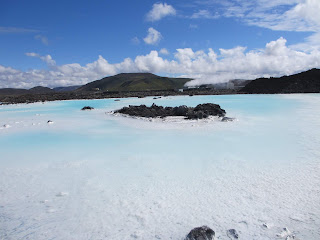THE BALTICS: STOCKHOLM, HELSINKI, AND TALLINN
“You should tell the
truth, but all truths don’t need to be told.” – Queen Katarina of Sweden
This
segment of our cruise has taken us through some of the major cities along the
Baltic Sea. St. Petersburg was certainly the highlight, but the other cities
were no slouches either. St. Petersburg will be treated in its own entry, but
as for the others:
STOCKHOLM,
SWEDEN
 |
| Ice Bar, Stockholm |
Having
spent some time here several years ago on a land trip, my expectation for this
visit included one thing I found still to be true: Stockholm is one of the
loveliest cities in the world. Spread across 14 islands where Lake Malaran
flows into the Baltic Sea, Stockholm was settled by the Vikings around the year
1000 on sites that had been settled since 6000 BC.
 |
| Rune stone, circa 1000, on a street corner in Stockholm's Gamla Stan |
My time in
Stockholm was divided into two pieces: a walking tour around Gamla Stan (the
old city), which is a warren of alleys and walking streets fronted by lovely
older buildings, some of which date back some 900 years, and a visit to the Ice
Bar.
The Ice
Bar in Stockholm is one of only three permanent ones in the world (there’s
another one in northern Sweden that is part of an ice hotel, and is rebuilt
every year). Everything inside is made of ice—the tables, the chairs, even the
glasses that you drink from. It is on the ground level of a regular hotel. You
enter through a transitional room, and are given a warm cape and mittens before
entering the bar itself.
 |
| Beth and our friend Cris, bundled up in the Ice Bar |
The decor is, of course, ice sculptures. I’m told the
theme changes from time to time, but during our visit it was a Viking theme. In
the bar, you are served a vodka drink in a glass made of ice. Of course, all of
us had to do the Christmas Story trick, and put our tongues on the glasses. No,
the tongues did not stick.
 |
| Ice Bar glasses |
 |
| On my Viking throne |
"O to be in finland/ now that russia's here" - e. e. cummings
Something
I had not realized is that, at the outbreak of WWII, Finland had allied with
Germany. Soon thereafter, however, it realized its mistake and entered into a
treaty with Russia for assistance in driving the Germans out. As a result,
Finland was never occupied during the war. . However, as another result, Russia’s
influence once again loomed large during the years that followed, until the
breakup of the Soviet Union and Finland’s entry into the EU.
As for the
city of Helsinki, its populace was decimated by the plague in 1710, and one
quarter of the structures of the city were destroyed by fire in 1808 during the
Finnish War.
The
troubles of those years seem well behind Finland now, with a thriving economy
and a well-educated populace that enjoys leisure time. The day we were in Helsinki
was the hottest in the memory of the local people, with a high temperature in
the neighborhood of 90 degrees F. So, despite it being a weekday, many people
were out enjoying a stroll through lovely Senate Square, a dip in the public
swimming pool built (literally) inside the harbor, or having a picnic on the
massive and beautiful Suomenlinna island, home of a long-time military fortress
and still the home of a naval college.
 |
| Viking monument on Suomenlinna island, Helsinki |
 |
| Helsinki harbor, complete with swimming pool |
TALLINN,
ESTONIA
“Not many know where Estonia is, but everyone
knows Skype. So now I say I’m the president of the country where Skype is.”
- Toomas Hendrik Ilves, President of Estonia
Strategically
located at the entry into the Gulf of Finland from the Baltic Sea, Tallinn is the
capital of Estonia and the subject of many tugs of war over the years. First
settled about 5,000 years ago, with a fortress constructed in 1050, Tallinn was
long an important port for Baltic trade and the northernmost member of the
Hanseatic League. Ruled by Denmark from the early 1200s, Tallinn came under
German influence during the Protestant reformation, and then was ruled by
Sweden until 1710, when Russia captured the Estonian territory.
Estonia declared
its independence from Russia in 1918. Russia resisted, but WWI intervened, and
Germany occupied Estonia for a period. Estonia
then managed to drive out both the Germans and the Russians, and obtain its independence,
but it was occupied by the Soviet Union during the early part of WWII, and then
Germany in the later part of the war. By the end of the war, it was re-occupied
by the Soviet Union, and afterward annexed as part of the USSR.
As the Soviet
Union was starting to crumble, Estonia, like other Baltic states, engaged in a
series of steps to push for independence. Among these steps was 1988’s “singing
revolution,” in which 300,000 Estonians, fully 20% of the country’s population
at the time, gathered at the Song Festival Grounds in Tallinn to sing six songs
that had become anthems of patriotism.
Today,
Estonia is a thriving democracy and a member of the European Union. Tallinn has
a strong artisan community, and Estonia a growing technology sector.
 |
| Artisans' street in Tallinn, with buildings from 1200s |


Comments
Post a Comment